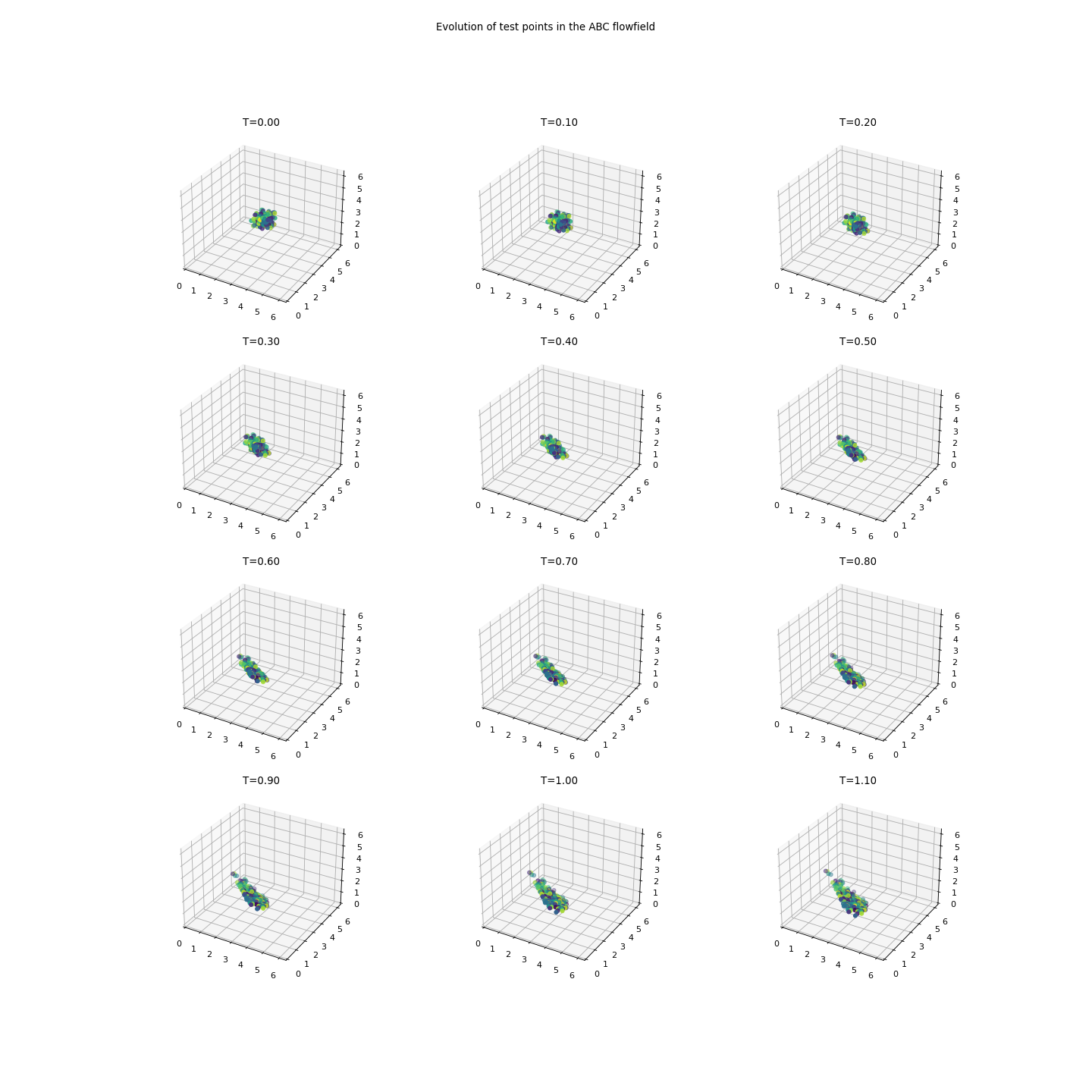function abc_flow¶
- deeptime.data.abc_flow(h=0.001, n_steps=10000)¶
The Arnold-Beltrami-Childress flow. [1] It is generated by the ODE
\[\begin{aligned} \dot{x} &= A\sin(z) + C\cos(y)\\ \dot{y} &= B\sin(x) + A\cos(z)\\ \dot{z} &= C\sin(y) + B\cos(x) \end{aligned}\]on the domain \(\Omega=[0, 2\pi]^3\) with the parameters \(A=\sqrt{3}\), \(B=\sqrt{2}\), and \(C=1\).
(
Source code,png,hires.png,pdf)
- Parameters:
h (float, default = 1e-3) – Integration step size. The implementation uses an Runge-Kutta integrator.
n_steps (int, default = 10000) – Number of integration steps between each evaluation. That means the default lag time is
h*n_steps=10.
- Returns:
system – The system.
- Return type:
Examples
The model possesses the capability to simulate trajectories as well as be evaluated at test points:
>>> import numpy as np >>> import deeptime as dt
First, set up the model (which internally already creates the integrator).
>>> model = dt.data.abc_flow(h=1e-3, n_steps=100) # create model instance
Now, a trajectory can be generated:
>>> traj = model.trajectory(np.array([[-1., 0., 0.]]), 1000, seed=42, n_jobs=1) # simulate trajectory >>> assert traj.shape == (1000, 3) # 1000 evaluations from initial condition [0, 0]
Or, alternatively the model can be evaluated at test points (mapping forward using the dynamical system):
>>> test_points = np.random.uniform(.5, 1.5, (100, 3)) # 100 test points >>> evaluations = model(test_points, seed=53, n_jobs=1) >>> assert evaluations.shape == (100, 3)
References
